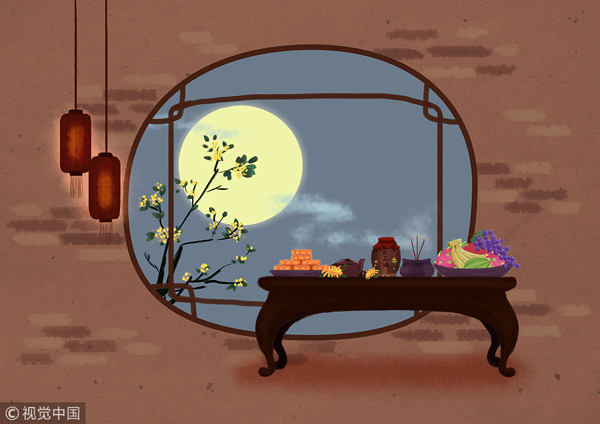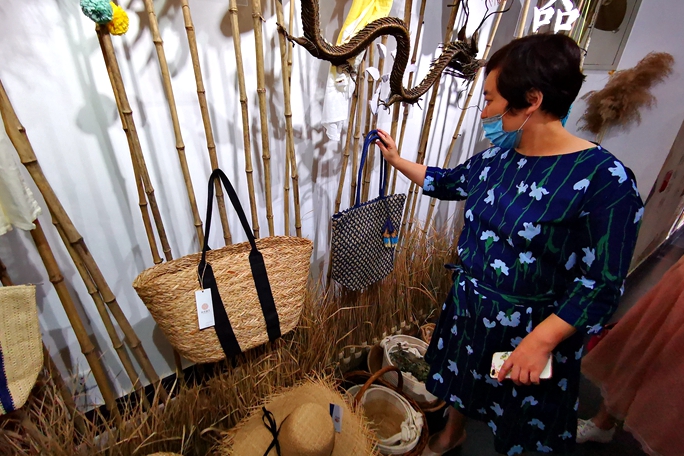Traditions you may not know about Mid-Autumn Festival in China
 |
|
Families reunite before the moon at Mid-Autumn Festival. [Photo/VCG] |
 |
|
People put out offerings to worship the "god of the moon" during Mid-Autumn Festival. [Photo/VCG] |
Since ancient times, there has been a tradition of worshiping the moon in Mid-Autumn Festival in China, which stems from the deification of the moon by the ancients.
On that day, people put the "god of the moon" sign, peaches, watermelons, mooncakes and other offerings on a table at home or outdoors, and then knelt down and kowtowed one by one, praying for blessings from the "god of the moon".
Nowadays, this tradition is disappearing. It's rare to see families worshiping the moon in big cities. In some old towns or tourist cities, people will hold a ceremony to worship the moon in a square, park, or street, but this is more like a performance.
 |
|
Watching the tide is a grand event during Mid-Autumn Festival. [Photo/VCG] |
In ancient times, watching the tide on the Qiantang River in East China's Zhejiang province was another grand event of Mid-Autumn Festival. The tide is very torrential and magnificent and attracts many onlookers.
It had been recorded in detail since the Han Dynasty (206 BC-220). Many famous ancient poets, like Su Shi in the Song Dynasty (960-1279), wrote about the grand occasion in their poems.
Today, watching the tide on the Qiantang River is still a characteristic event for the festival.

 Shandong Culture and Tourism Consumption Season
Shandong Culture and Tourism Consumption Season Culture, tourism sectors pick up in Shandong as epidemic wanes
Culture, tourism sectors pick up in Shandong as epidemic wanes

